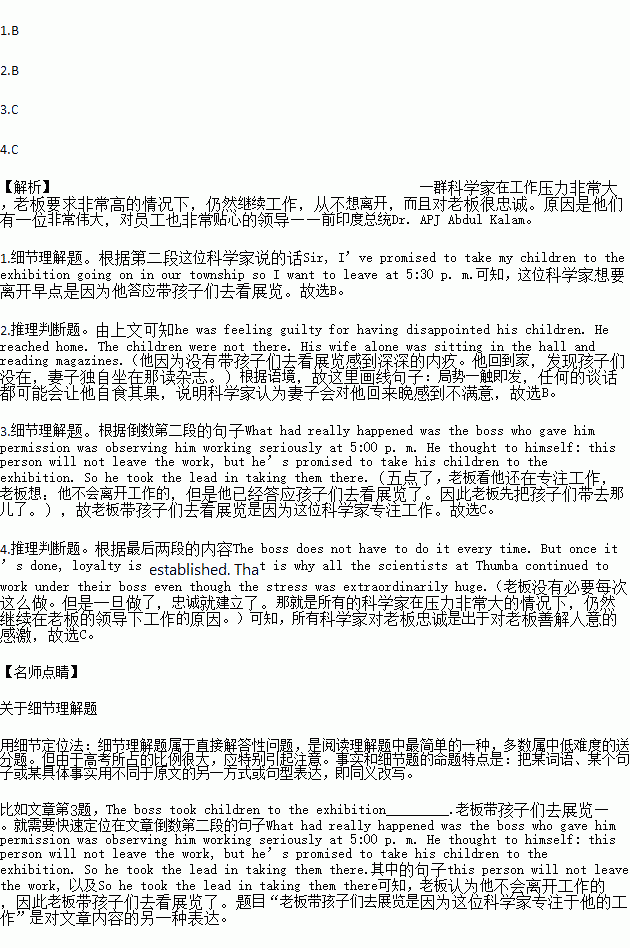题目内容
About 70 scientists were working on a very busy project. All of them felt really desperate due to the pressure of work and the demands of their boss but everyone was loyal to him and did not think of quitting their job.
One day, one scientist came to his boss and told him, “Sir, I’ve promised to take my children to the exhibition going on in our township so I want to leave at 5:30 p. m.” His boss replied, “OK. You’re permitted to leave the office early today.”
The scientist started working. He continued his work after lunch. As usual, he got involved to such an extent that he looked at his watch only when he felt he was close to completion. The time was 8:30 p. m. suddenly he remembered his promise to the children. He looked for his boss but he was not there. Having told him in the morning himself, he closed everything and left for home. Deep within himself, he was feeling guilty for having disappointed his children. He reached home. The children were not there. His wife alone was sitting in the hall and reading magazines. The situation was explosive; any talk would boomerang on him. His wife asked him, “Would you like to have coffee or shall I straight away serve dinner if you are hungry?” The man replied, “If you would like to have coffee, I too will have but what about the children?” His wife replied, “You don’t know? Your boss came here at 5:15 p. m. and has taken them to the exhibition.”
What had really happened was the boss who gave him permission was observing him working seriously at 5:00 p. m. He thought to himself: this person will not leave the work, but he’s promised to take his children to the exhibition. So he took the lead in taking them there. The boss does not have to do it every time. But once it’s done, loyalty is established.
That is why all the scientists at Thumba continued to work under their boss even though the stress was extraordinarily huge. By the way, can you boldly guess who the boss was? He was none other than the mastermind behind India’s successful nuclear weapons program, Dr. APJ Abdul Kalam, former president of India.
1.The scientist asked for an early leave because ________.
A. he felt increasingly desperate about his work
B. he’d promised to take his kids to a show
C. the task at hand was close to completion
D. he meant to accompany his wife at dinner
2.The underlined sentence implies that the scientist thought his wife was ________.
A. ready to serve dinner for him B. dissatisfied with his coming home late
C. grateful to his kind- hearted boss D. delighted to see him back home
3.The boss took children to the exhibition ________.
A. when it was too late for the scientist to do so
B. when the man’s wife asked him to do so
C. because the scientist was absorbed in his work
D. because he also wanted to see what was on show
4.All the scientists stayed loyal to their boss ________.
A. because he had power over them
B. to learn how to live under pressure
C. out of gratefulness for his thoughtfulness
D. every time he took the children to the show


